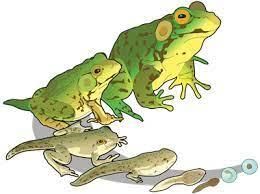Reproduction in Animals - 1 Class 4 Worksheet Science
Q1: Label the different stages in the life cycle of a butterfly.
Q2: Multiple Choice Questions (MCQs).
(i) ________________ is the process in which the young one breaks open the egg shell to come out.
(a) Metamorphosis
(b) Hatching
(c) Moulting
(d) Incubation
(ii) Which of the following is not a part of a bird’s egg? (a) Pupa
(a) Pupa
(b) Shell
(c) Yolk
(d) Albumen
(iii) This organism does not incubate its eggs.
(a) Butterfly
(b) Parrot
(c) Pigeon
(d) Hen
(iv) Which of these defines a mammal?
(a) It gives birth to babies and feeds them with its own milk.
(b) It gives birth to babies and brings food to feed it.
(c) It lays eggs and looks after them and the babies after they hatch.
(d) It lays eggs but does not look after them or the babies after they hatch.
(v) _____________ lays adhesive eggs. (a) Snake
(a) Snake
(b) Frog
(c) Cat
(d) Lizard
Q3: Fill in the blanks.
(i) The period of time for which a living organism lives is called _____________.
(ii) The animals which lay eggs are called _____________ animals.
(iii) The _____________ in a tadpole vanishes when it grows into an adult frog.
(iv) The animals which give birth to their young ones are called _____________ animals.
(v) _____________ provides nutrition to the embryo inside an egg.
Q4: True & False.
(i) The eggshell of a hen is totally waterproof and airproof.
(ii) Mammals leave their young ones on their own as soon as they are born.
(iii) Jelly-like covering protects the eggs of a frog.
(iv) Birds, snakes and turtles lay hard-shelled eggs.
(v) Butterfly and frogs show metamorphosis.
Q5: Match the following.
 Q6: Answer the following questions in brief.
Q6: Answer the following questions in brief.
(i) How do insects take care of their eggs?
(ii) What is metamorphosis?
(iii) How do birds protect their young ones?
(iv) How does air cell form inside an egg?
(v) What is incubation?
Q7: Answer the following questions in detail.
(i) What is the difference between a tadpole and an adult frog?
(ii) Differentiate between viviparous and oviparous animals. Give examples.
Q8: Give two examples of the following.
(i) Viviparous animals ________________ ________________
(ii) Insects with 3-stage life cycles ________________ ________________
(iii) Moulting animals ________________ ________________
(iv) Aquatic oviparous animals ________________ ________________
(v) Insects with 4-stage life cycles ________________ ________________
________________
You can find Worksheets Solutions here: Worksheet Solutions: Reproduction in Animals - 1
|
48 videos|156 docs|34 tests
|
FAQs on Reproduction in Animals - 1 Class 4 Worksheet Science
| 1. What are the different modes of reproduction in animals? |  |
| 2. How does sexual reproduction occur in animals? |  |
| 3. What is asexual reproduction in animals? |  |
| 4. Can animals reproduce through both sexual and asexual reproduction? |  |
| 5. How does fertilization occur in animals? |  |

















